
Software technologies are evolving rapidly. Once it was very difficult to even create a complex functionality but now a variety of development models are available that make it easy to build complex applications.
After understanding the business requirements and market trends, highly rated software development companies adopt an approach that ensures the successful delivery of a software solution.
However, you need to know your options. Monolithic architecture is no longer an option when building complex and scalable software products. You should consider picking something more flexible. Serverless and microservices are popular choices for building scalable software products.
But which model is more appropriate for your project?
Read this article on Serverless vs Microservices to compare these concepts in detail and make an informed decision.
1. What are Microservices?
Microservices is a software development approach that consists of a set of loosely coupled services. As opposed to monolith architecture, microservices is a distributed system where each unit is created, and released independently.
This architecture breaks down the app into smaller units which allows you to scale, update, and replace the services quickly and easily. If any service fails, it won’t affect the overall performance and functionality of the application because each service operates independently. This ought to make your app more reliable.
Microservices architecture is ideal for apps that run in distributed and cloud-based environments. It runs different microservices on different servers which helps make equitable load distribution. This makes it easy to manage large and complex applications.
Microservices are more than just an app development approach, they represent a way of thinking about how your app fits together.
1.1 How Does Microservice Architecture Work?

Each microservice in the architecture works independently to handle specific functionality. Along with essential templates and code libraries, you will need containers to create microservices architecture.
Docker is utilized to create a container that meets all the requirements of a component to function like rendering a running environment for a service. The microservices architecture workflow includes the following stages:
- Decomposition: Break down the app features into smaller units.
- Design: After knowing the services you will be working with, determine all the connections between each service, and establish a hierarchy and dependencies.
- Development: Once the microservices map is ready and the team has clarity on how the system works, you can immediately start creating multiple services.
- Deployment: You can release the microservices as FaaS in a serverless infrastructure. Certain VMs, or containers.
Further Reading on: Microservices Design Patterns
1.2 Microservices Advantages
Using microservices offers the following benefits:
- Separation of concern: A dedicated team is allocated for the development and maintenance of every service. This helps ensure that each microservice is distinct and the architecture has a clear separation of concern.
- Reusable: Because each service is an independent component that handles specific functionality, microservices can be reused in different projects and procedures.
- Flexibility: The development, testing, and deployment of one service do not interfere with another service or with the parent application. Even if a service fails, the app would still remain functional and its performance unaffected.
- Rapid development: Adopting this approach improves the speed of the software development process. Any issue that arises can be dealt with easily and the changes can be implemented quickly.
- Easy debugging: Due to every service being isolated in a small unit, diagnosing the system and finding bugs or problems become easier, even when working on a large enterprise-grade application.
1.3 Microservices Disadvantages
Along with the plethora of microservices advantages, there are also some disadvantages of adopting it as mentioned below:
- Complexity: With the increased number of independent components in the system, complexity is bound to arise.
- Security risks: Every service in this architecture communicates with each other using APIs. These APIs are not only vulnerable to security breaches but also the points through which these communications pass.
- Overhead and expensive: Due to decoupled services, the development team has to manage multiple databases and requires specific expertise. This requires talent and resources that come at a high cost.
1.4 Microservices Use Cases and Real-World Applications
Using microservices allows you to build and manage a large codebase. It also enables you to quickly make modifications to the existing components. Additionally, handling large datasets and creating complex functionalities are what microservices are known for. So, the microservices use cases will include:
- To create large enterprise-grade applications
- For building highly scalable applications
- Apps that need frequent changes and updates
- Developing big data applications
- When working on multiple projects with similar functionalities
Some real-world applications that are enjoying success because they are built upon microservices are Netflix, Amazon, and Uber. Netflix opted for microservices because of their reliability in improving server maintenance and personalized show recommendations.
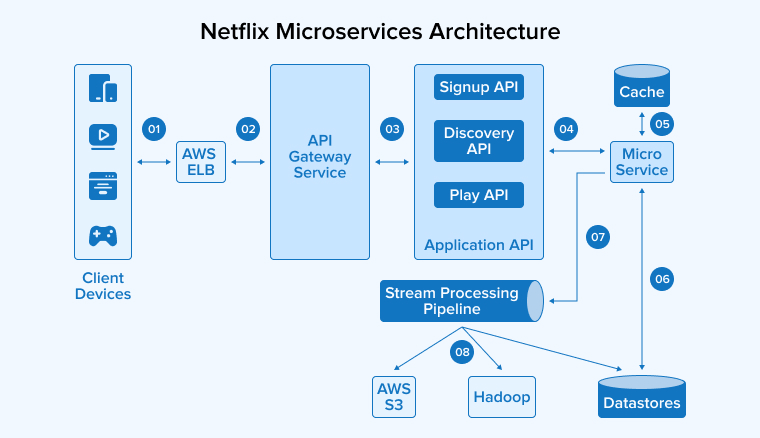
Amazon saw enormous growth after transitioning from its expensive monolithic architecture to more effective microservices architecture. Uber is using microservices to manage their business operations easily.
2. What Is Serverless Architecture?
Serverless means without a server. When developers build a function or an application managed on the cloud that doesn’t require a server, it is called a serverless application or function.
Developers just write code and upload it to the cloud. It will be executed in response to the triggers set up ahead of time. There is no need to run such a code continuously, but only when required.
This means that the costs will only include the computing resources used by your app or function while running. You don’t have to buy and set up everything, you just have to pay for what your app consumes. It’s one of the main reasons why this computing model is becoming increasingly popular.
2.1 How Does Serverless Architecture Work?
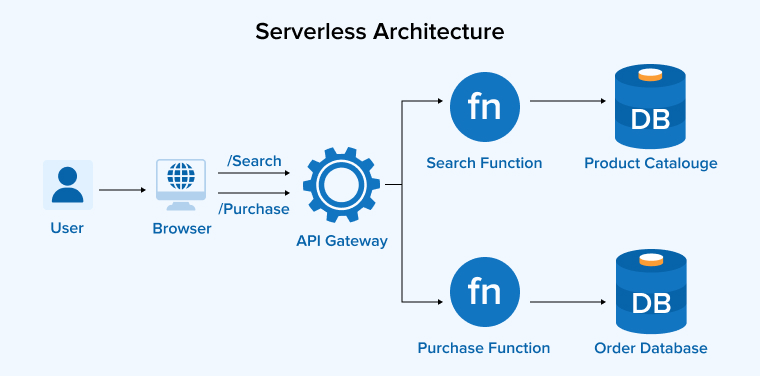
In Serverless architecture, all features are broken into small components that are assigned to do particular tasks in response to a trigger. The most common stages of a serverless architecture workflow include:
- Functions: Developers write code that can carry out a specific task for the application. Popularly known as functions, these are often quick and simple.
- Event: Developers set some conditions. If they are met then a function is triggered in the application. Every serverless function is assigned certain events.
- Trigger: The functions are carried out in response to the events. So, these events are called triggers for functions. It can be any condition set by the user like pressing a particular key to tapping on the screen or more.
- Execution: Running the functions
- Output: Updates received by the users on the client side of the application are known as results.
Developers determine the desired outcomes and then attach them to specific components. Some functions run parallelly and respond to various interactions. Therefore, defining the relation and dependencies between these components is crucial.
2.2 Serverless Advantages
Serverless offers a wide range of benefits including:
- Flexibility: It is easier to manage, update, and scale each service when the entire app is broken into small functionalities.
- Scalability: Because you don’t house any resources, you don’t have to worry about buying more resources and setting them up. It’s an expensive option, using a third party’s resources makes scaling easier and cost-effective. Because you are only paying for resources you use. You do not have to worry about anything else.
- Reduced complexity: You don’t have to manage the infrastructure and other resources. So, complexity is reduced drastically.
- Reduced cost: In serverless you don’t need to purchase all the resources and set them up somewhere. Instead, use the resources provided by the service provider and you just need to pay for what your app consumes.
- Reliability and decreased latency: Using serverless helps reduce downtime issues and request/response latency, thanks to the widespread data centers of public cloud providers.
2.3 Serverless Disadvantages
Certain limitations to the implementation of serverless architecture are:
- Third-party dependency: When you are using third-party resources, you are relying on them for your application performance. Any issues with their servers or resources may cause your app negatively affected.
- Cold starts: A serverless function might require a cold start to rework when it has remained inactive for a long time, which can be time-consuming.
- Technological limitations: When you rely on service providers for resources, you also need to use the tools and technologies that your provider supports.
- Limited customization: The options for configuring the backend capabilities of the application such as RAM limit and computing power are less in the serverless architecture. You have to work with the functions offered by your service provider.
2.4 Serverless Use Cases and Real-World Applications
Being a cost-effective approach to software development, Serverless is an appealing option for startups and small businesses. On the other hand, the limitations we discussed earlier make enterprises wary of this architecture. However, Serverless is very helpful under the following circumstances:
- For building lightweight apps
- To create applications that have to handle varying traffic in a serverless environment
- Develop IoT applications
- For Automating the CI/CD pipeline
- Apps that need to be developed and deployed quickly
- Ideal for small projects with limited budgets
Real-world applications that use serverless architecture include Figma, Codepen, and Nordstrom. Figma leveraged the serverless to allow the developers to focus on projects while users collaborate on design.
Codepen uses serverless architecture to aid designers and developers in creating websites. Nordstrom utilized serverless to create an event-based app for their use and add more features to it.
3. Key Comparison Between Microservices vs Serverless Architecture
Both of our approaches here are about developing and deploying small, independent application services. However, there are some notable differences that you should know about.
3.1 Different Approaches to IT Operations
In the microservices approach to development, it is important to develop, deploy, and maintain team resources. The development team is responsible for setting up the architecture for the application, ensuring its safety, and handling all its computations.
Meanwhile, in the serverless approach to software development, you won’t have to worry about developing, deploying, and maintaining the servers or their security. Third-party vendors have you covered. They take responsibility for all the internal operations, which helps reduce your project costs significantly.
3.2 Cost
Cost is one of the main differentiators between this architecture as microservices seem more costly than serverless.
When developing independent components in microservices, you may need to utilize different tech stacks as well as set up different resources such as databases for each service. Additionally, you would need to recruit different types of tech specialists to handle technological resources for each service.
Meanwhile, the serverless architecture enables you to pay only for the resources you consume from third-party vendors. No need to hire different teams or resources either.
3.3 Runtime
Every cloud vendor has a limited runtime for serverless functions. For example, AWS Lambda can run only for 15 minutes. The reason for this limitation is that serverless functions are designed for quick activities that don’t use much RAM. So, for short-term activities, use Serverless functions.
On the other hand, Microservices do not have predefined limits on runtime, RAM, and storage, making them an ideal option for carrying out long-term activities.
3.4 Complexity
Handling serverless architecture is easy as its functions are executed in response to certain triggers or events. These functions run for a very limited time. Additionally, you don’t have to develop or manage any infrastructure or other resources.
Whereas with microservices, you have a web of interconnected small functions that are running continuously and built to scale. Although creating complex applications becomes easy with microservices, handling all these services efficiently is a challenging task in itself.
3.5 Scalability
Both microservices and serverless architectures are scalable. But their approach to scalability is a little different.
In a microservices architecture, every service or function is independent, requiring them to be scaled independently. Moreover, you have to take care of all the infrastructure and resources that each service needs to perform up to expectations.
On the other hand, Serverless automatically scales the functions depending on its requirements. As your code scales, the cloud provider will automatically allocate the necessary resources to execute it in a suitable environment. The serverless functions expand as the number of events triggering them increases.
4. Quick Comparison
Get a glance at the comparison of microservice vs serverless based on important parameters.
| Parameters | Microservices | Serverless |
|---|---|---|
| Type | A Service-oriented Architecture used to develop applications | A cloud computing model is used to run applications. |
| Resource management | Setting up and managing all the resources is up to the team. | Third-party vendors handle all the resources. |
| Cost | High initial cost as you have to set up different resources for each independent service no matter if they are used or sitting idly. | Only Pay for the resources your app consumes. |
| Runtime | Microservice functions run continuously | Serverless functions have a limited runtime |
| Complexity | Due to the interconnected web of small services, it is complicated to handle microservices | Functions are simply executed in response to events. |
| Scalability | Can scale each service independently | Is scaled automatically on demand. |
| Use | Ideal for building large, complex, and scalable applications | Used mostly for short-term activities |
5. Role and Resources Required For the Development Project
Planning is very critical to microservices app development. You have to determine which microservices to build for your application, how they will work, and how they will use APIs to communicate with each other. A software developer with expertise in microservices architecture is required for this task.
In addition to that you will require developers and testers to create independent services. Although languages like .NET, JavaScript, Python, and Java are commonly used for building microservices, this architecture is compatible with all technologies.
Teams in such projects are usually small and cross-functional. On top of that, you need developers who have skills in handling data and cloud systems.
Since every service is assigned a different team and resources for the sake of its independent functioning, the initial cost of software development with a microservice architecture is very high. But it seems cheaper if you are working on a long-term project.
You can launch the microservices application more quickly compared to a monolithic app. It is very reliable and easy to maintain.
When it comes to serverless architecture, you first need to find a suitable cloud vendor like Microsoft Azure, Google Cloud Functions, AWS Lambda, and more. There are two types of approaches in serverless architectures: BaaS and FaaS. You need to adopt one based on your requirements and define the serverless functions along with their triggers.
Moreover, you need to hire developers who can work with your cloud service provider and have good proficiency in Python and JavaScript. In terms of cost, serverless is cheaper than any other software development approach out there. It also allows rapid development and deployment.
6. Microservices Best Practices
Some of the microservices best practices you should follow to ensure the effective implementation are:
- Use separate data storage for every microservice
- Use a centralized logging and monitoring system to track the activities of each microservice.
- Prioritize security from the beginning. Employing a DevSecOps model for the safety of the microservices.
- Since every team has different services to build and launch, everyone must have clarity on their responsibilities.
- Keep the communication between microservices asynchronous.
7. Serverless Best Practices
Adhering to the serverless best practices will help you make the most out of this architecture. It includes:
- Scanning functions for potential vulnerabilities
- Managing failures to ensure high availability
- Implementing caching to reduce the initialization times.
- Preparing detailed logging and a reliable monitoring system that tracks metrics in a relevant context.
- Utilizing runtime security
8. Conclusion
After reading this article, you might have come to know the concepts and workings of microservices as well as serverless architecture. Each development model comes with its own set of pros and cons. To pick a suitable architecture, you have to analyze your requirements, the scope of the project, and your business goals.
If you are working on a short-term project or with a limited budget then Serverless is the right option for you. But if you are building a large and complex application that is expected to grow with time then microservice architecture is better suited for this.
Ultimately, the teams and technologies you employ will determine whether you will successfully get to the other end.
FAQs
Is every API a microservice?
Microservices is a collection of small, independent services wherein API acts as a component helping microservices architecture to improve its effectiveness. Microservices leverages APIs to expose its functionalities and communicate with other services.
Can serverless and microservices work together?
You don’t need to choose just one from serverless and microservices. If your project demands then you must use both architectures together. Using serverless microservices combined can make up for each other’s weaknesses and you get the best of both. It is possible to deploy microservices as serverless app architecture.
What is the next trend in microservices?
The most popular trends in microservices including Cloud adoption, DevOps, and Serverless architecture are dubbed as the next trends in microservices that can shape the future of the industry.
Is serverless architecture the future?
It wouldn’t be far-fetched to claim that Serverless architecture might just be the future of the software development industry. It introduces automation which helps resolve the issues of allocating cloud computing resources.


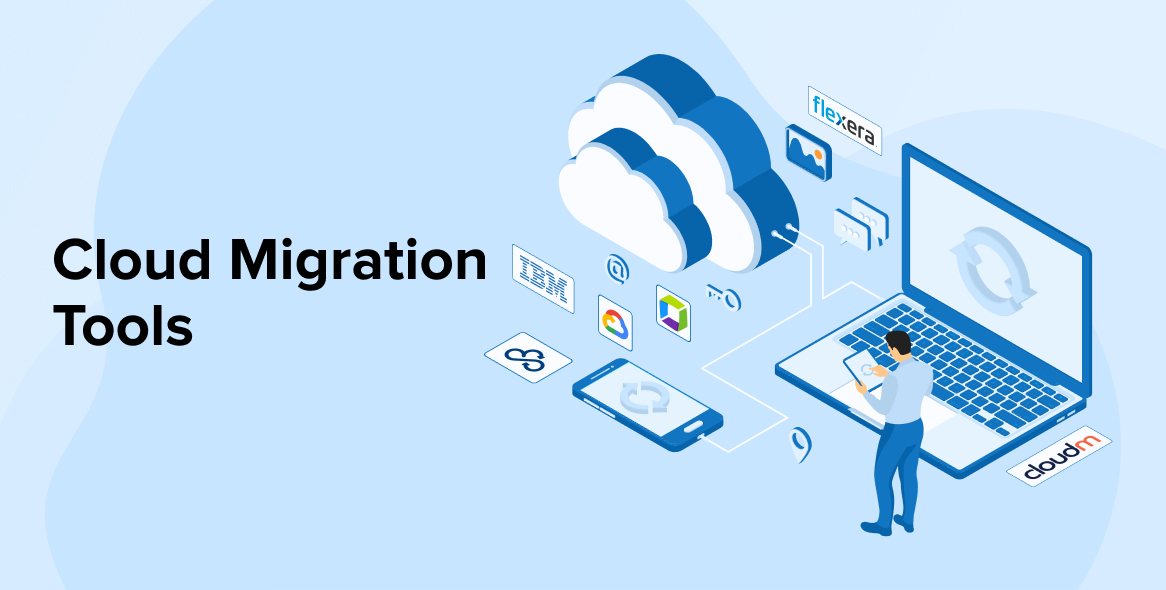
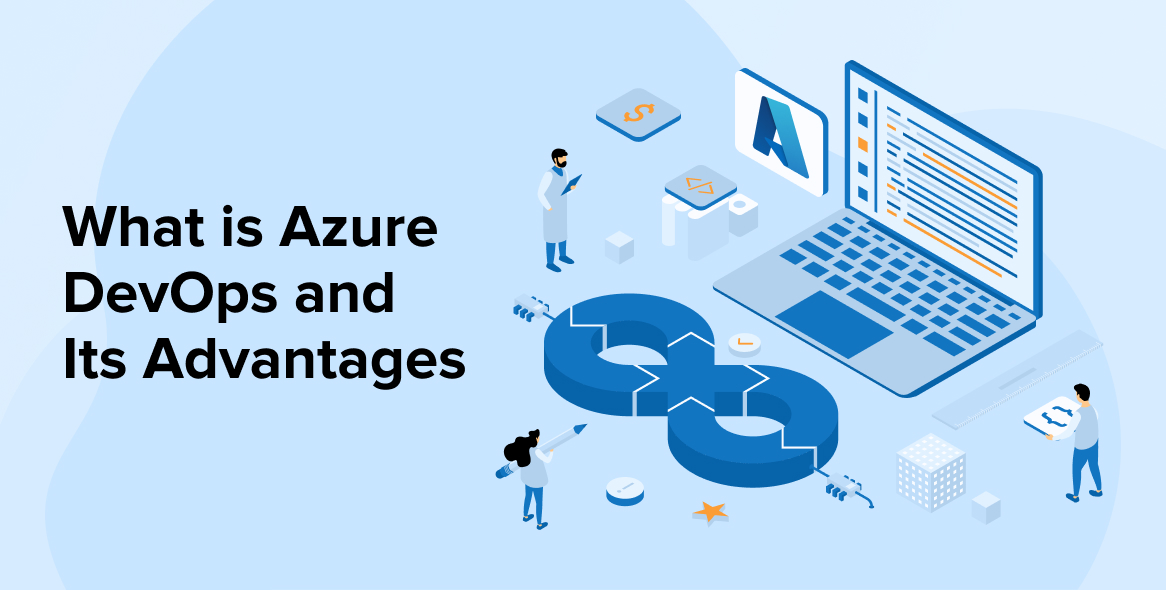
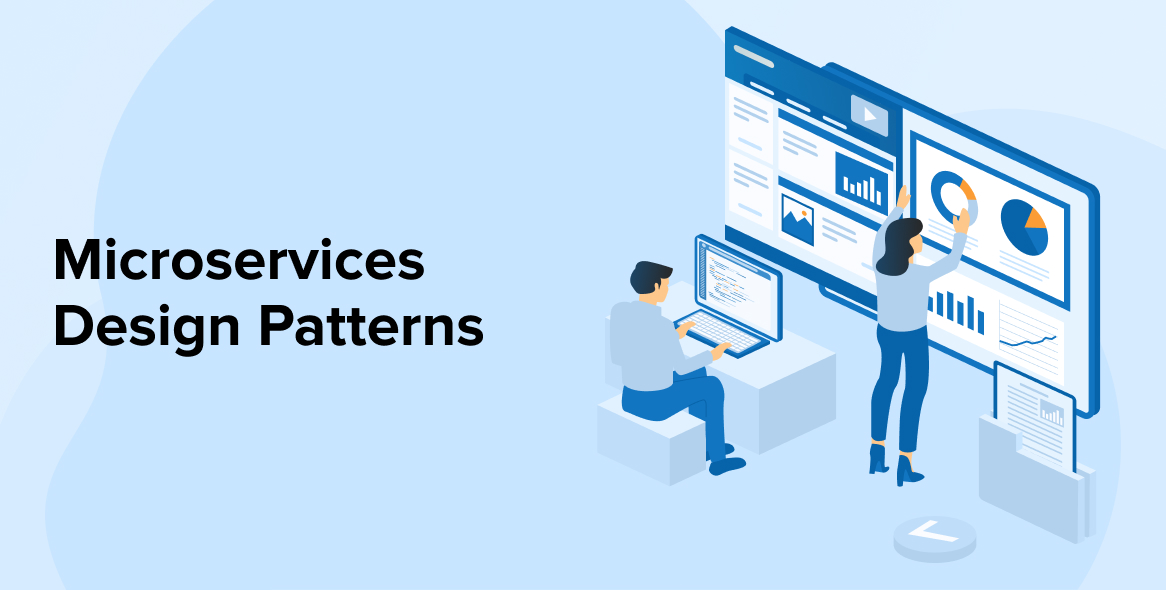

Comments
Leave a message...